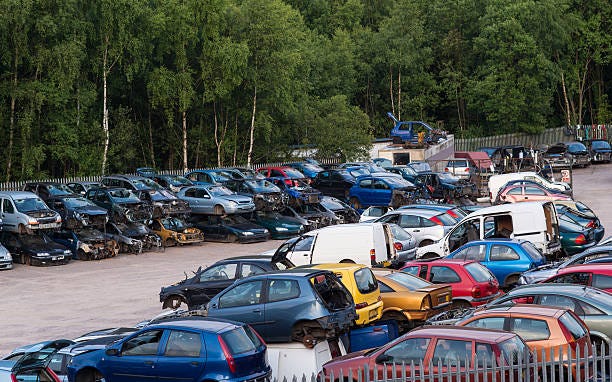From Scrap to Valuables: The Significance of Car Reclamation in a Green Tomorrow
In fast-evolving world, the value of sustainability has never been more apparent, and a area that is frequently neglected is the realm of auto recycling. As vehicles approach the end of their life cycles, their valuable components can be reclaimed and utilized again, thus avoiding their contributing to the growing problem of landfill waste. The method of auto recycling not only assists in lessening harm to the environment but also plays a key role in saving resources and the planet's resources.
With an increasing number of scrap cars filling our roads and communities, the demand for efficient scrap car removal has grown. This not only does it provides a way to vehicle owners wanting to get rid of their junk cars but also supports the greater initiative of fostering a green future. By converting these labelled junk cars into treasured resources, we can pave the way for a healthier planet where every part of our vehicles contributes to a circular economy.
The Ecological Consequences of Scrap Cars
Having scrap cars in the environment presents serious ecological concerns. Old vehicles often leak toxic materials such as oil, antifreeze, and acid from batteries into earth and streams. Such contamination can have dire consequences for nearby habitats, impacting flora and fauna. Without proper scrap car removal, these harmful substances can persist for years, leading to long-term damage to the ecosystem.
In addition, the resources in automobiles intensify waste issues. Cars are composed of metals, plastics, glass, and rubbery materials, each of which require energy-intensive processes to create from basic materials. When cars are not recycled, their parts are sent to landfills, which occupy land and add to environmental degradation. But, with successful car recycling, we can recover and recycle useful parts, minimizing the requirement for new resources and minimizing environmental degradation.
In conclusion, the automotive industry plays a vital role in lowering greenhouse gas emissions through recycling. The process of recycling scrap cars substantially decreases the carbon footprint associated with the production of new components. By salvaging metals and other materials, we not only save energy but also decrease greenhouse gas emissions that play a part in climate change. Adopting auto recycling is crucial for encouraging a sustainable future and safeguarding our Earth for generations to come.
Benefits of Auto Recycling
Vehicle recycling offers considerable green benefits by diminishing waste and preserving natural resources. When vehicles are recycled, important materials such as iron, nonferrous material, and plastic are obtained and reused. This process lowers the need for fresh raw materials, leading to a decrease in extraction and manufacturing emissions. By reducing the demand for virgin materials, auto recycling plays a crucial role in safeguarding ecosystems and reducing the carbon footprint associated with car production.
Moreover, the system of recycling used cars contributes to financial efficiency. Junk car removal not only provides jobs but also aids local businesses that focus in breaking down and handling vehicles. This feature of the recycling industry enhances the economy while simultaneously encouraging sustainable practices. In addition, recycling helps to stabilize the supply of materials that manufacturers depend on, ultimately contributing to a more resilient and sustainable automotive sector.
Lastly, auto recycling fosters a mindset of sustainability and resourcefulness. As more people recognize the value of recycling their outdated vehicles, it increases awareness about the importance of responsible consumption. free towing in mindset encourages consumers to think reflectively about their impact on the environment. By participating in auto recycling, people make a beneficial choice that contributes to a sustainable future, reinforcing the idea that all small action counts in the greater effort to safeguard our planet.
The Process of Scrap Car Removal
The process of scrap car removal commences with the assessment of the vehicle's condition. Owners typically get in touch with a scrap car removal service to obtain a price based on the car's make, type, and overall state. This initial evaluation assists determine whether the vehicle is worth salvaging for parts or if it should be dismantled for scrap metal. Once an agreement is made, arrangements for removal are established, making the process simple for the owner.
On the scheduled day, professionals come to safely collect the vehicle. They handle all the necessary paperwork to ensure the legal transfer of ownership, including the cancellation of the documentation with local authorities. This is crucial to keep the process compliant with regulations and to prevent any potential liability issues for the previous owner. The removal team also ensures that hazardous materials, such as fluids and batteries, are disposed of responsibly.
After the car is picked up, it is taken to a recycling facility where it undergoes dismantling and sorting. Useful parts are removed for resale or reuse, while the remaining metal body is processed for recycling. This final step not only reduces landfill waste but also contributes valuable materials back into the production cycle. Through effective scrap car removal, both the environment and the economy benefit, showcasing the crucial role of auto recycling in the modern era.
